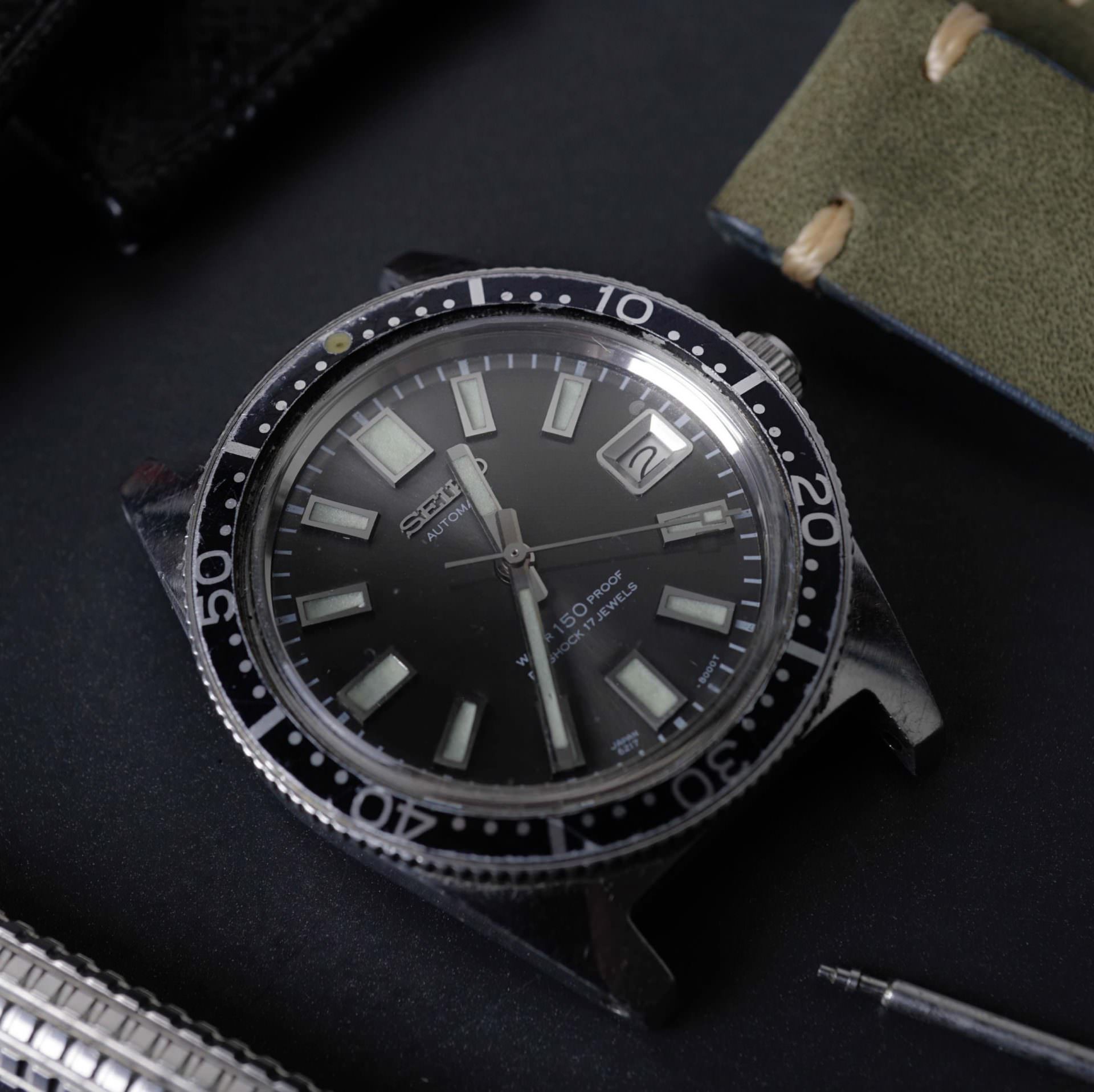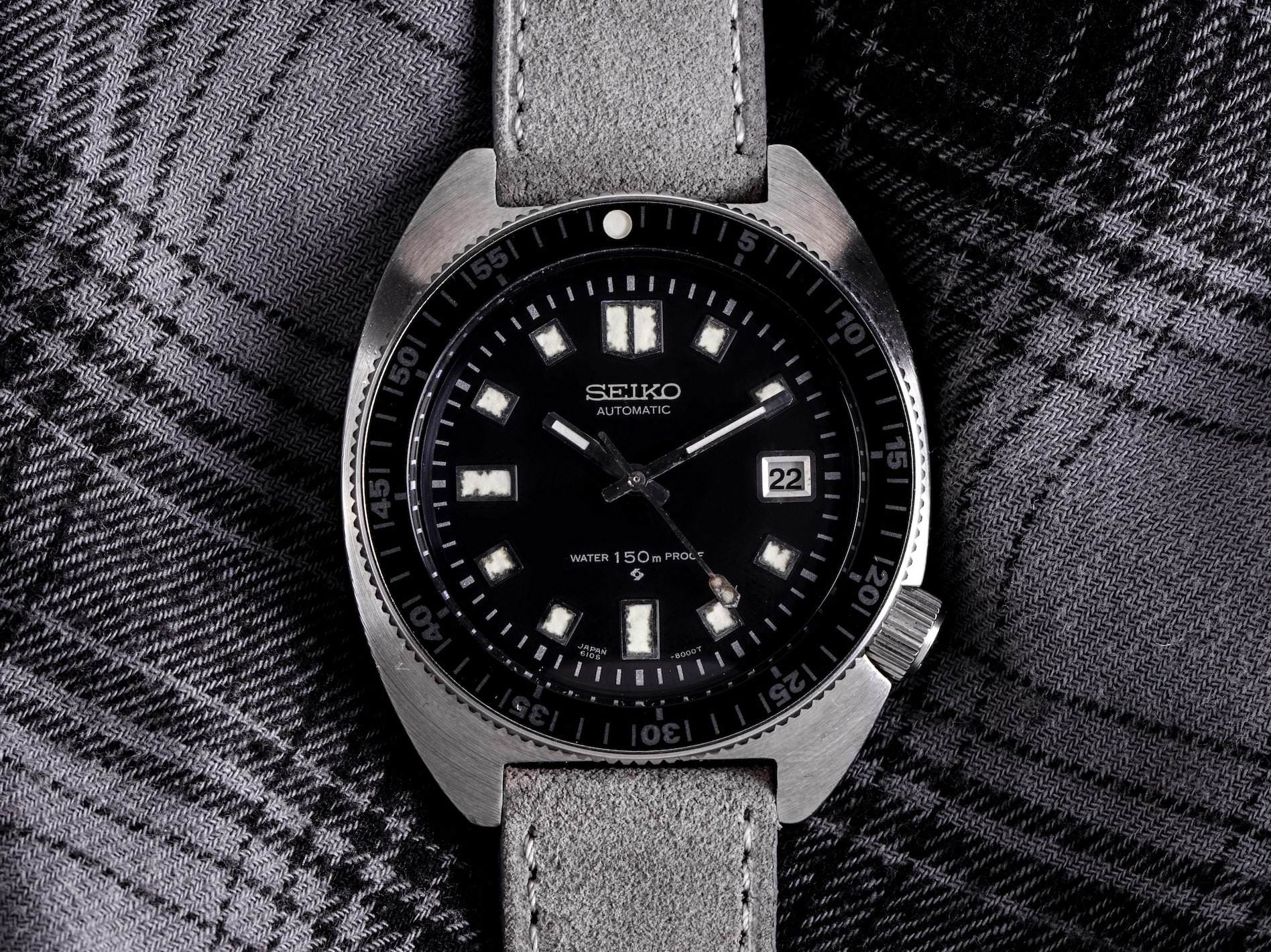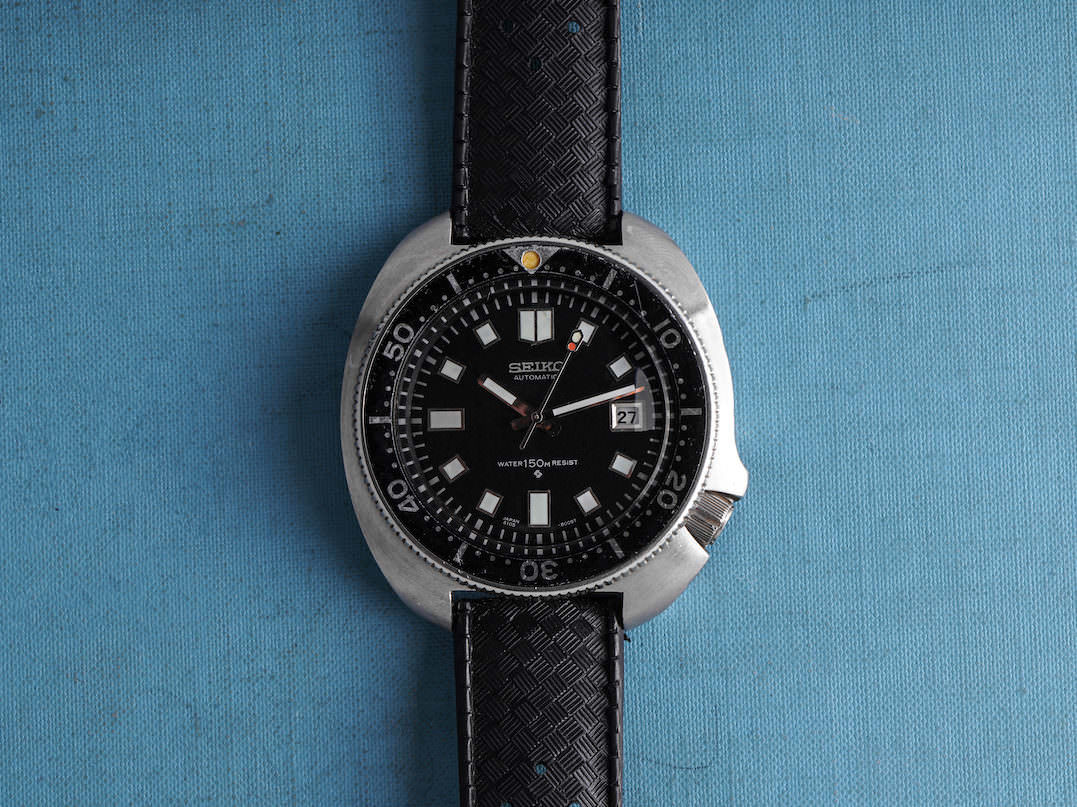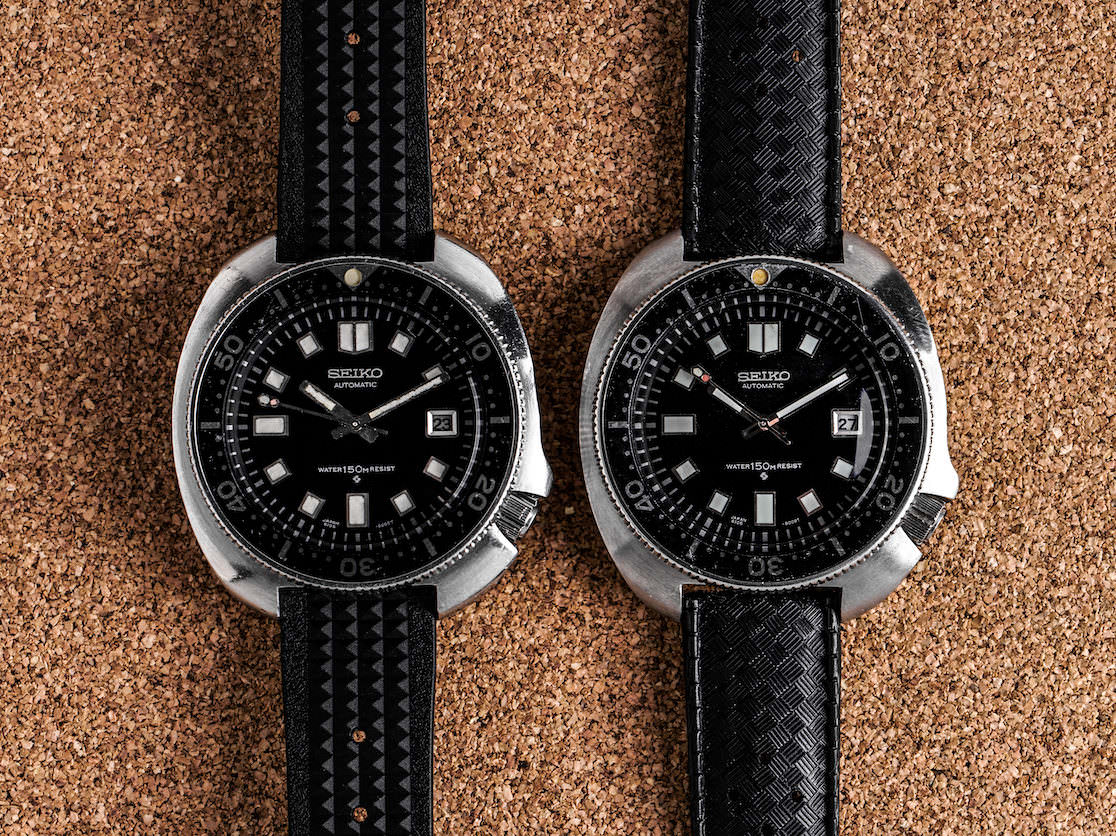There is a specific sense of satisfaction that comes from wearing a Seiko. It’s like being part of a club, a club that offers a long lineage of excellent watchmaking and extreme attention to detail in a resilient fashion. This couldn’t be more true when looking at the Seiko dive watch range of watches, as Seiko has a long history of making superior dive watches perfect for pros, weekend enthusiasts, and everyone in between.

The Seiko 6105-8xxx series replaced Seiko’s original professional diver, the 62MAS in 1968. Before we “dive” into the specifics of the 6105-8110/9, let’s provide you with an overview of the 6105 series of watches. The first of Seiko’s 6105-8xxx series of watches came in two main designs and were produced under four reference numbers, which were produced from 1968 to 1977. For simplicity, we can break these variants into two groups: the Seiko 6100-8000/ 6100-8009 and then the later Seiko 6105-8110/6105-8119. In typical Seiko fashion, two of the reference designations were designed for marketing reasons to differentiate the Japanese domestic market (JDM) variants from the U.S. versions. Outside of the caseback reference between the two references, there aren’t any technical differences between the JDM and the variants that were slated for sale in the United States.
 6105-8000 - More symmetrical case design.
6105-8000 - More symmetrical case design.  6105-8110 - Wider, less symmetrical case.
6105-8110 - Wider, less symmetrical case. Here is a quick breakdown of the 4 separate 6105 references
According to the catalogs, the transition between the 2 versions was made in 1969-1970. So, the 6105-811x (the second generation) was made from 1970-1977.
At a quick glance, you may not be able to spot the difference between the two, as they are very similar in design, but the Seiko 6105-8000 possesses a symmetrical case with an offset crown, whereas the 6105-8110/9 possesses a truly asymmetrical case. The dial and hand configurations are also pretty much the same with the main differences being subtle. The 8000/8009 versions have “Water Proof” on the dial versus “Water Resist” on the dials and case backs (hence the “Proof/Proof,” “Proof/Resist,” and “Resist/Resist” classifications often seen in for sale postings). Also, the 6105-8009 gains an improvement from the upgraded 6105B movement that added hacking to the 17-jewel base caliber. The 6105-8110 was the first Seiko diver to use an asymmetrical case and integrated crown guards which can still be seen in the modern Seiko Professional divers today, which is one of the main reasons the 6105 an icon of watch design.

If you have ever owned a vintage Seiko Diver then you will know that the build quality and finishing of the Seiko 6105-8110 is excellent, and without a doubt on par with dive watches of the same period of the late 1960’s into the 1970’s — very much like the quality and finishing seen within the Omega Seamaster 300 and the Rolex Submariner lines of dive watches of the same era.
The Seiko 6105-8110 comes in at an impressive 44mm in diameter and features a 17 jewel automatic running at 21,600 BPH . An interesting fact is that most Seiko movements are named after the reference itself (or could be vice versa), as we see with the 6105-8110, which is powered by the automatic Seiko 6105. The Seiko in house 6105 movement possesses a quick-set date and a hacking feature. The movement does not hand-wind due to Seiko’s magic lever system, so to get things going you actually just shake it. The 6105-8110/9 possesses a water resistance of 150 meters and has a bi-directional rotating click bezel. The crystal is Seiko’s Hardlex mineral glass. The Lug width is 19mm, and although that may seem small for the hefty 44mm case it looks proportionate and the watch feels just as good on a NATO strap as it does on the original black dive strap. The crown locks onto the case tube rather than using a screw-down type of crown found more commonly in divers of the era.
What most don’t consider but should most certainly take note of is Seiko made everything in-house. Seiko designed and manufactured their own movement, milled their own cases, and even developed their own crystals and movement lubricants, which should tell you more than you need to know about the build quality and robustness of the Seiko 6105-8110. Even to this day, Seiko continues to be an innovator within the watchmaking field. Just check out any of the Grand Seiko models in the current Seiko line up and you will quickly see exactly what I am talking about.

You will often hear the collector community call the Seiko 6105-8110/0 the “Captain Willard”, as a Seiko 6105/8110 was featured prominently on the wrist of Martin Sheen’s character, Captain Willard, in the seminal 1979 Francis Ford Coppola film Apocalypse Now. Being true to form many service members including the US special forces and early U.D.T team members wore the Seiko 6105-8110 during the Vietnam conflict. Seiko watches were among a number of brands, including Rolex and Tudor, offered in the military PX’s at that time. The Seiko 6105-8110, however, was just slightly cheaper then than a Rolex or Tudor Submariner, and it had a reputation for providing no-nonsense functionality with a build quality that could withstand such a harsh climate.

The vintage Seiko collector community is one that is serious and growing. Attaining a Seiko 6105 isn’t overly hard to do, but locating a good example can prove to be challenging, as is often the case with vintage watch collecting. One most certainly needs to be careful when looking at vintage Seiko 6105 as they were typically used for their intended purpose. Often the components — including the bezel, dial, and hands — are replaced with aftermarket components during service needed due to use and water intrusion. The pricing has been steadily increasing over the past few years, and that should continue with the heightened awareness of the reference and because of its collectability and wearability due to its functionality and classic look and design.
In closing, the Seiko 6105-8110/9 (aka the “Captain Willard”) is an icon and is something that when on the wrist provides a sense of satisfaction, while also checking every “tool watch” box that you can think of.
For more info check out the Craft +Tailored episode of “What Is On My Wrist” on the Seiko 6105-8110 AKA The “Captain Willard”. Don’t forget to subscribe on YouTube to get alerted about the latest episode every week.

Check out 'Reference Tracks' our Spotify playlist. We’ll take you through what’s been spinning on the black circle at the C + T offices.

Never miss a watch. Get push notifications for new items and content as well as exclusive access to app only product launches.
Sign up for our newsletter to receive updates and exclusive offers